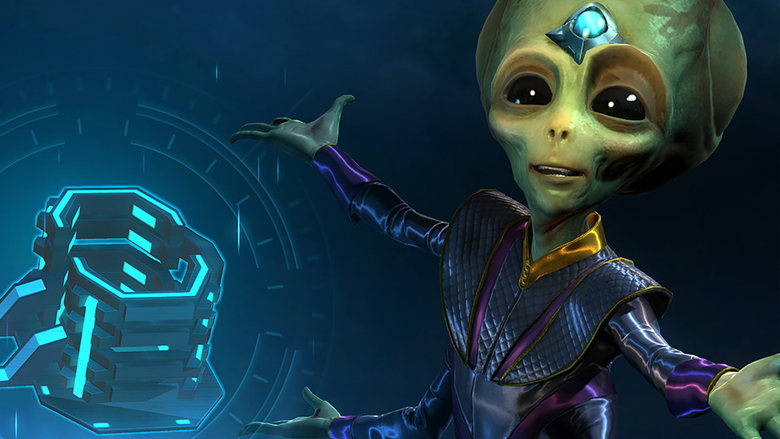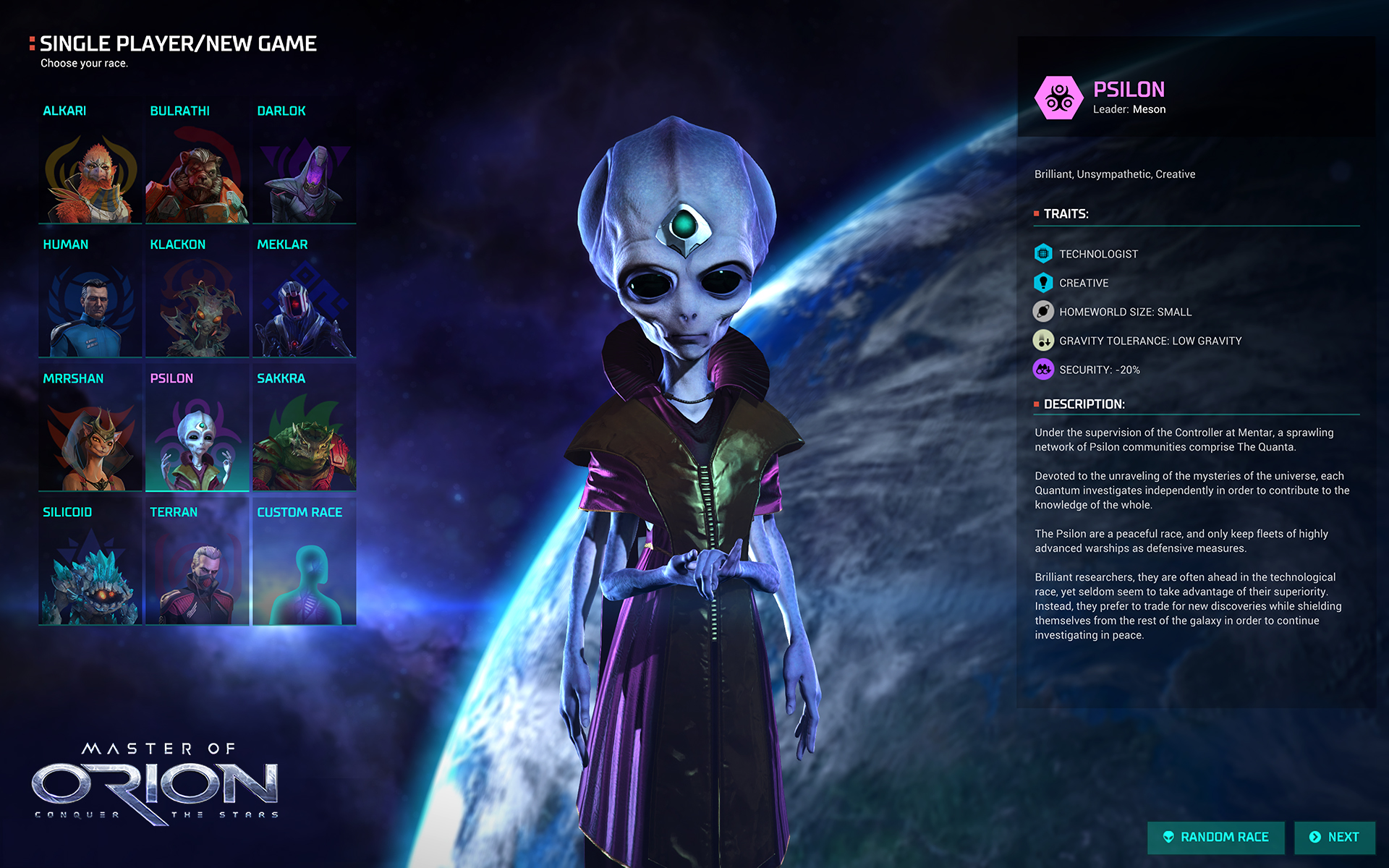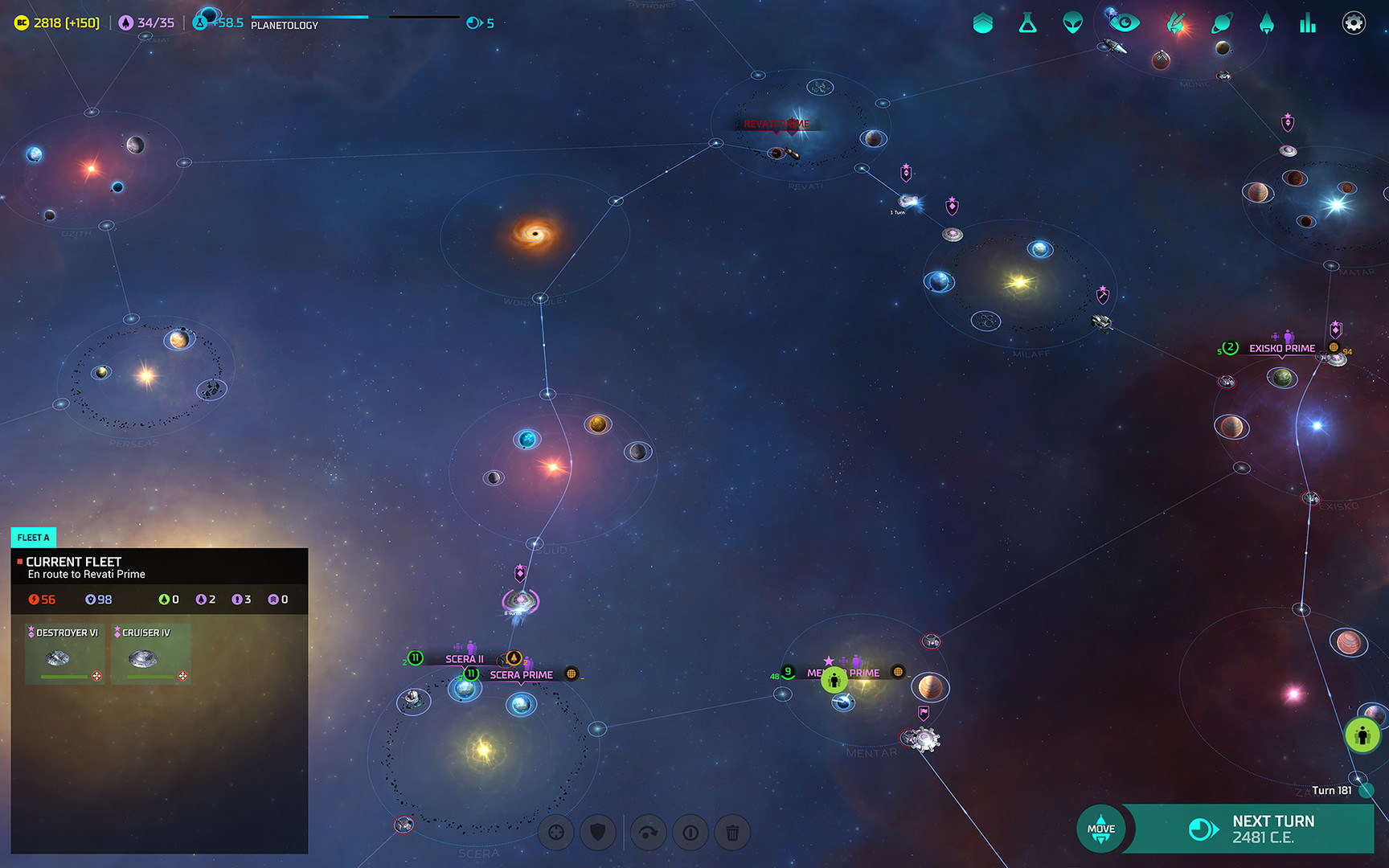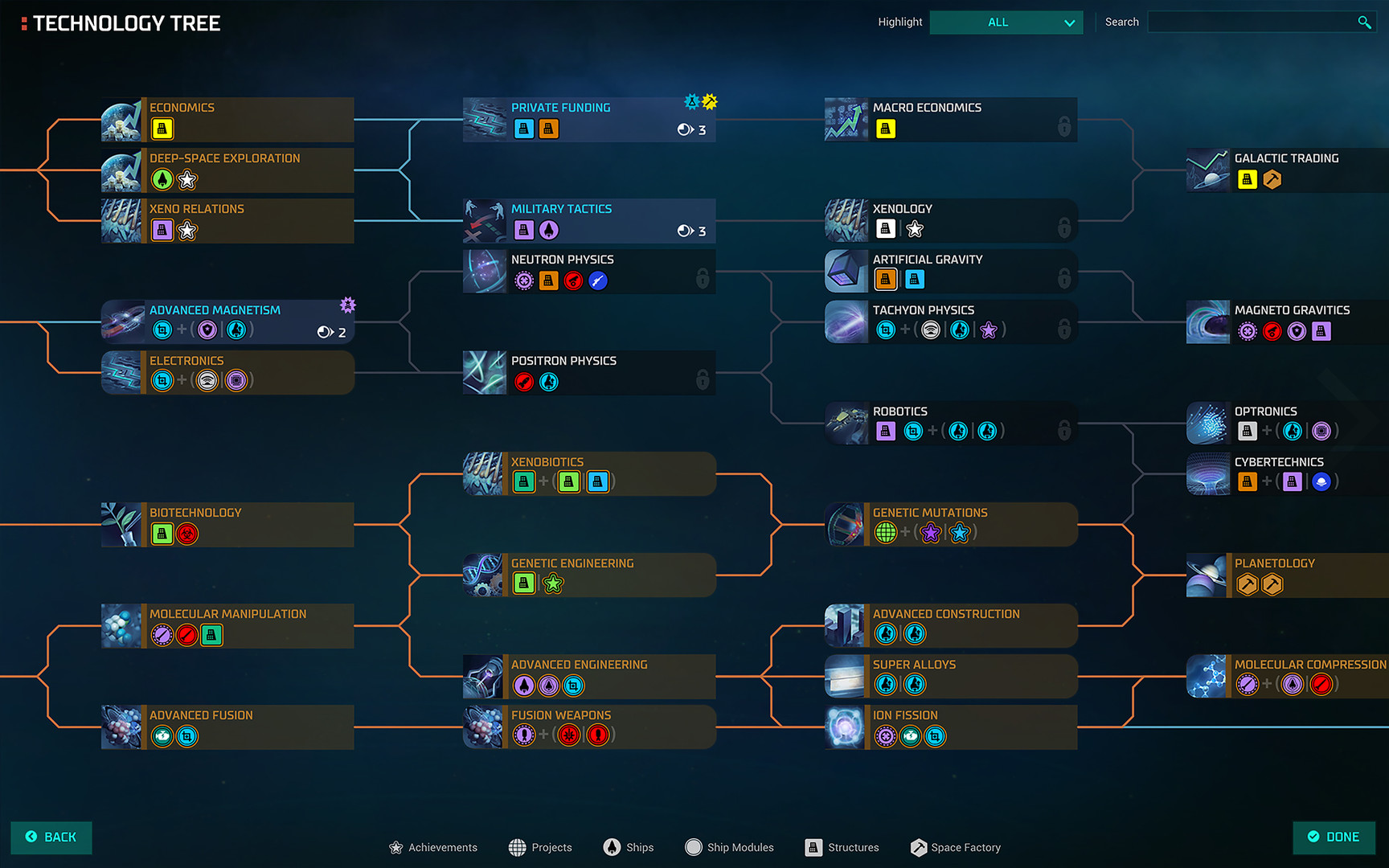The end of August witnessed the full-fledged release of Master of Orion developed through a mutual effort of NGD Studios and Wargaming. Alexander Zezyulin, R&D Operations Director of Wargaming shared some stories about the course of work on the game.

Hello, Alexander! Let me congratulate you on the long-awaited release of Master of Orion. As far as I know, this is not just another sequel to the game but a complete restart of the series from scratch?

Alexander Zezyulin
Thank you for the warm welcome! You are right, during the production of this version of Master of Orion we used the first two parts as origins but the ultimate goal was, in a sense, republication of the original version. Whereas, we really wanted to introduce the first generation of players to the classic strategy, which was one of the first founding genres of merely all global strategies.
Let me start from a distance. I realize you tell this story a lot but let’s repeat. What did it all start from? How did this happen that the Argentinean NGD Studios, earlier involved in MMO and action games, took upon Master of Orion?
The story goes like this: the team of NGM – hardcore fans of Orion – at some point got engaged in prototyping a similar game. And at that time the news broke out that Wargaming bought the rights to Master of Orion brand with all the prequels to the series. When NGD heard about that, they presented us with their developments. All in all, it was fate. The history of NGD has a lot in common with Wargaming prior to the release of World of Tanks by the latter. This is an old and experienced studio with leading potential and regional opportunities, with its culture and yet zestful attitude and hearts full of passion. It is very appealing to us and we like to work with such people.
BTW, if it’s not classified. Did Wargaming buy NGD Studios?
No, the studio is an independent partner of Wargaming working with us under contract for the development of a specific product.

What was the stage of the original build of the project offered to Wargaming?
The original prototype offered a simplified galaxy map, on which you could move armies and fight with an AI opponent. It did not feature a strategic or economic part but it had tactical fights. I have to say that there is nothing left from this first part in the final release. Even the art direction has significantly changed since then.
Did you have any solutions in the original build that you decided to remove right there (or what kind of features they were)?
No, we did not have such solutions. The full-fledged preproduction of the project started later when the studio signed a contract with Wargaming.
How many people did you have in the project’s team prior to cooperation with Wargaming? And how big has it grown since then?
The size of NGD’s team on the project has changed insignificantly and remains around 40 people. Periodically we added some team members from Wargaming and remote consultants to help us with the project.
And how many people from both sides have been involved in creating the game?
It is hard to give you exact figures but I think that the peak number of people working on the project was around 65 engineers including remote experts.

I think many people are curious to learn about the role distribution in the publisher/developer team of the project (and people responsible for it)?
During the start of Master of Orion project, we had a small team in Wargaming working directly with the studio in Argentina and Victor Kisliy as the project ideologist. A vast part of design related decisions back then was made after long collective discussions; we did not have any forced opinion from any of participants. Gradually, the control over the project was resumed by Wargaming’s office in Austin and at the same time the Orion project was joined by consultants from the creators of the original series. A bit later the team in Austin was joined by a publisher’s rep (Wargaming) and from there on the international team of the project in the regions started growing (gaming community management, users support, etc.). The game release was handled by teams of Wargaming and WG Labs in Minsk, Austin and the headquarters in Nicosia.
How was the team interaction process organized (how independent were the Argentineans in decision-making, how often did they talk to the producer, how tough was the supervision, was every art object reconciled with Wargaming)?
For us, it was utterly important to uncover the art potential of the studio and not to use it as an outsourced contractor who would do everything strictly as we planned. We had virtually daily interaction with the studio; we visited the office of NGD very often, met with them at the gaming industry events. Cooperation like that excludes the notion of close control. We were and are trying to remain colleagues on the way of the game release. However, we certainly had some reconciliation. The studio would ask our Austin office and the authors of the original series for advice on design related issues. We conducted a range of consultations with the artist involved in the original version of Master of Orion on the outlooks of the game. UX and UI have passed a range of testing at Full Sail University (Orlando, USA) where Wargaming supports the development of its UX laboratory.
Who was involved in the game development from the creators of the original trilogy? How tight was the cooperation (did you have a case when something was introduced into the game by the experts)?
In the first two issues of developers’ diaries, you can spot the names of the creators of the original version of the game involved in the project.
The cooperation was super tight. The lead artist of the very first Orion Jeff Dee constantly consulted the Art Director of the new game from NGD during the work on races and their environment (ships, surroundings, etc.). David Govett, the composer of the first Master of Orion, wrote all the music for the new version. Jeff Johannigman, the producer of the original Orion, participated in all the discussions on the product design.
By the way, the fanfic by Sergei Lukyanenko “The Line of Dreams” inspired by Master of Orion. Why have you decided not to involve the writer into the project (for instance, to offer him republishing the fanfic but under Master of Orion brand)?
Due to a number of reasons we decided to decline this type of cooperation.
The question that I will ask right not will likely get under NDA ruling, but I cannot help not to ask. What kind of KPIs related to the volume of sales did you set before the project (or, if you cannot reveal the exact figures, have you reached them or not yet)?
Unfortunately I am not at liberty to answer this question. The most important task we had is to return the game to its fans. Besides, we wanted to revive the legend and realize the long-cherished dream of Victor. We did not have a goal to generate loads on cash on it.
Let’s go back to development. I personally liked the UI approach in the game: neat, minimalistic, radically different from rather heavy by today’s standards interface of the two first parts, as well as from UI of Master of Orion 3, which reminded Star Trek-styled Excel spreadsheets of the 90-es. Can you tell us how the interface evolution occurred in interface design while working on the latest Master of Orion?
Victor Kisliy has made a significant contribution into the overall interface design during the first stage of game development. We have reworked some of the mockups several times before we were happy with the result (and later, reworked them again, this time to match our taste). We have many handmade sketches on the board, loud arguments, Skype calls, mockup exchanges and sketches over the mockups. A great deal of credit for the final interface should be given to the mentioned UX lab, which was involved in testing.

BTW, which of the previous parts of the game have you oriented more during development?
On the first and second parts.
The fans of the original Master of Orion are chastising the project for being too much influenced by Endless Space and the latest parts of Civilization. Is that so? If yes, then why?
The global strategies genre does not stand still. In the earlier times, many games have adopted the ideas from Master of Orion, something I would call “reverse adoption” in the area of cultural exchange. Let’s be honest, hardly any of the fans still plays the original parts today, since it’s a very old game.
While working on the games studios maintain various approaches to graphics. As a rule, a lot of things depend on the target audience. Tell us how in Wargaming you characterize the audience of the new Master of Orion and, hence, what kind of graphics you decided to implement in the game?
We wanted to expand the game’s audience beyond just fans and hardcore players. That’s why the graphics and the interface are rather light, bright and even soft. At the same time, we tried not to lose the series atmosphere, which is very important for the fans: the race looks, branded humor. Especially humor.

On overall, how much time you needed to go from the first version of the game to the Early Access release?
About two years. The dates are rather fuzzy, since due to our reverent attitude to the legend we have carefully studied every decision.
Why did you start with Early Access? I always thought that only the studios that run out of money come to such actions in order to take a project to release without starving in the meantime.
It was an idea of WG Labs. We, as a publisher, are interested in gaining an experience in entering platforms like Steam and GoG with a premium product. The first game WG Labs released through an early access and active interaction with the audience in order to complete the game. The second game, Hybrid Wars, we are releasing without early access but through blitz release. This way we are able to gain multifaceted experience in dealing with the audience and the distribution platforms.
Right after the release the game was heavily criticized by the fans of the original trilogy. How does Wargaming recommend the developers to cope with such situations in general (without taking tons of sedatives, of course)?
We have and we will have critics, and we can do nothing about it. The important thing is not to fight those who are constructive about their criticism. This will not gain you any good. Alas, the review and scoring mechanisms on Steam are such that the users (and spiteful critics, in particular) may write anything and their opinion will be displayed. You should live with it and just continue improving your product. Keep finding people ready to stand up for your project and work with them. And the ill-wishers will eventually forget about you. BTW, I would not call those people the fans of the original trilogy. The fans, in fact, were buying the game and were happy that the series was reviving.

As far as I know the project is criticized for the fighting sequences and insufficiently different races. Would you change something about it or schedule some improvements for the future releases?
We made improvements. The races are gradually becoming more individualized. Most likely it is not the final rebalance of the game.
What specifically is different in the final version versus the early access version (key points, of course)?
The final release includes the full access to the content, additional materials for collectors’ edition, ability to get a free copy of the classic RTS Total Annihilation and, of course, tons of bug fixes.
